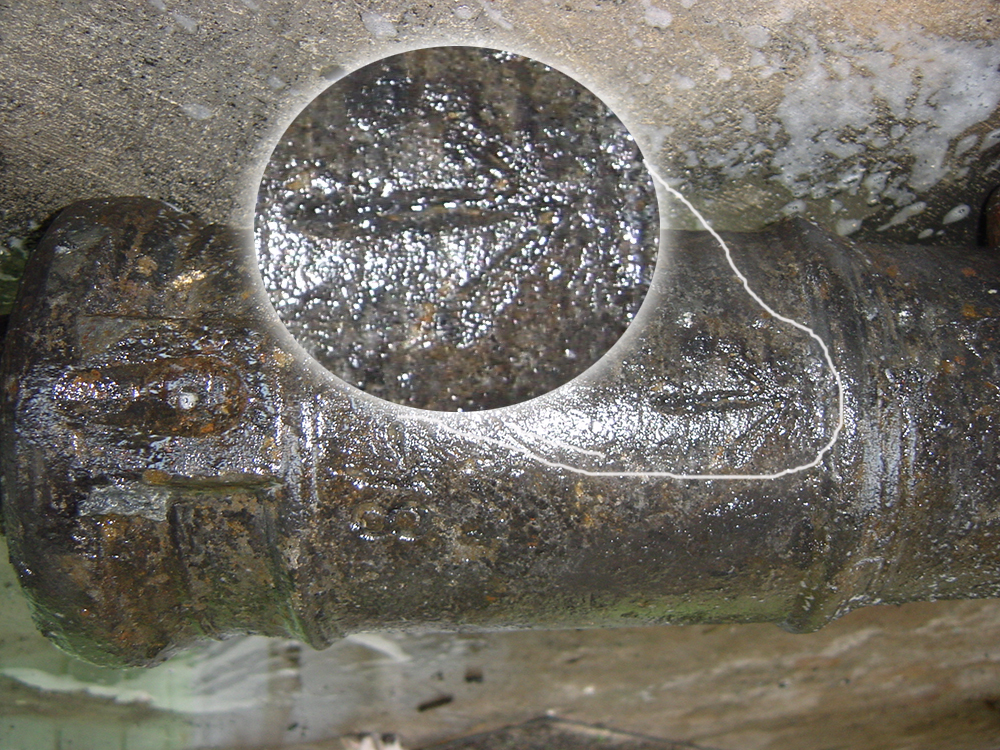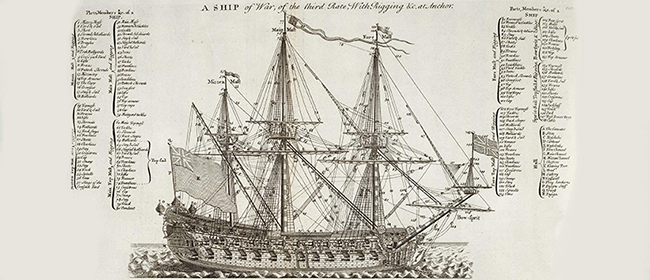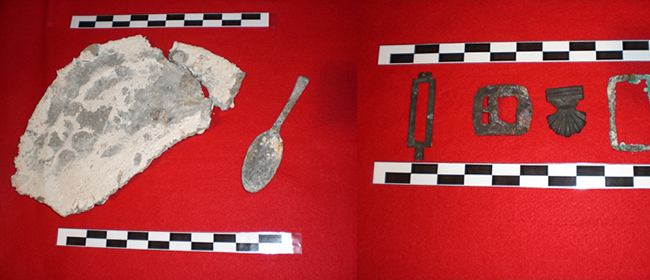English Broad Arrow
Commonly referred to as the ‘Broad Arrow’ or ‘Crows Foot’, the ‘pheon’ is a common heraldic symbol depicting an arrowhead and has long been the standard British military ownership mark. It can be found in varying forms from simplistic to stylized. It can be used as a stand alone marking simply to denote ‘ownership’ or along with other markings to convey more detailed information. It can also be used in a pair as opposing arrows (pointed towards each other) denoting official disposal or the ‘sold out of service’ mark.

Broad Arrow stamped on our Swival Cannon, above the
weight markings.
The Broad Arrow is the most recognizable British (and Commonwealth) military mark and easily the most frequently encountered, although there has never been any legal requirement for the various military establishments to apply this mark. This causes some confusion amongst collectors who mistakenly believe that if there is no mark then the item has no military connection, which is not strictly true.

Broad Arrow stamped on on of our 11lb cannon balls.
Approximately 20 % that have had their encrustation
removed thus far has shown the Broad Arrow.
The origin and earliest use of
the broad arrow symbol are unknown. It could be related
to the actual arrow, longbows and bowmen being a key
part of the English army in the Middle ages. Broad Arrow
Tower, built by Henry III of England between 1238 and
1272, in the Tower of London is said to be named after
the royal property mark. Invention of the mark is
frequently attributed to Henry Sydney, 1st Earl of
Romney, who served as Master-General of the Ordnance
from 1693 to 1702, since the pheon (broad arrow) appears
in the arms of his family, but it is known to have been
in use earlier than this. There is also an
unsubstantiated claim that a document dated 1330, issued
by Richard de la Pole, the King's Butler, for the
purchase of wine shows that in order to make sure that
ownership could be readily established as King's
property, he marked each item with an arrow from his own
Coat of Arms.
Early use of the broad arrow can be
found on some objects recovered from the Tudor ship Mary
Rose, which sank in 1545. Bronze sheaves for rigging
blocks, spoked wheels for gun carriages, bowls and
wooden tankards were found to bear this mark.
Similar to hallmarks, it is currently a criminal offence
to reproduce the broad arrow without authority. The
Embezzlement of Public Stores Act 1698 in clause 41
makes it illegal to use the "broad arrow / King's mark"
on any goods not for His Majesty's government's use.
We have found broad arrow marks on many of our artifacts including cannons, cannon balls, grape shot, tools and barrel hoops.

A spectacular Broad Arrow on a 6lb cannon ball

Very, very nice Broad Arrow on an 11lb cannon ball

A 1lb ball with a broad arrow, extremely rare.











